Congratulations! By finding this blog, you've already entered one of the most challenging areas of shooting sports—Precision Rifle Shooting (PRS). PRS is a long-range, precision-based discipline that originated from practical shooting. Today, we'll discuss how to choose the best scope for PRS.
In PRS, competitors must fire 10 shots per stage within a limited time (often 2 minutes). Unlike benchrest shooting, PRS requires shooters to assess the stage layout and adapt to multiple shooting positions, typically between 2 and 5. Given the complexity and challenge of the sport, the scope used needs to excel in every aspect to meet the high demands of PRS.
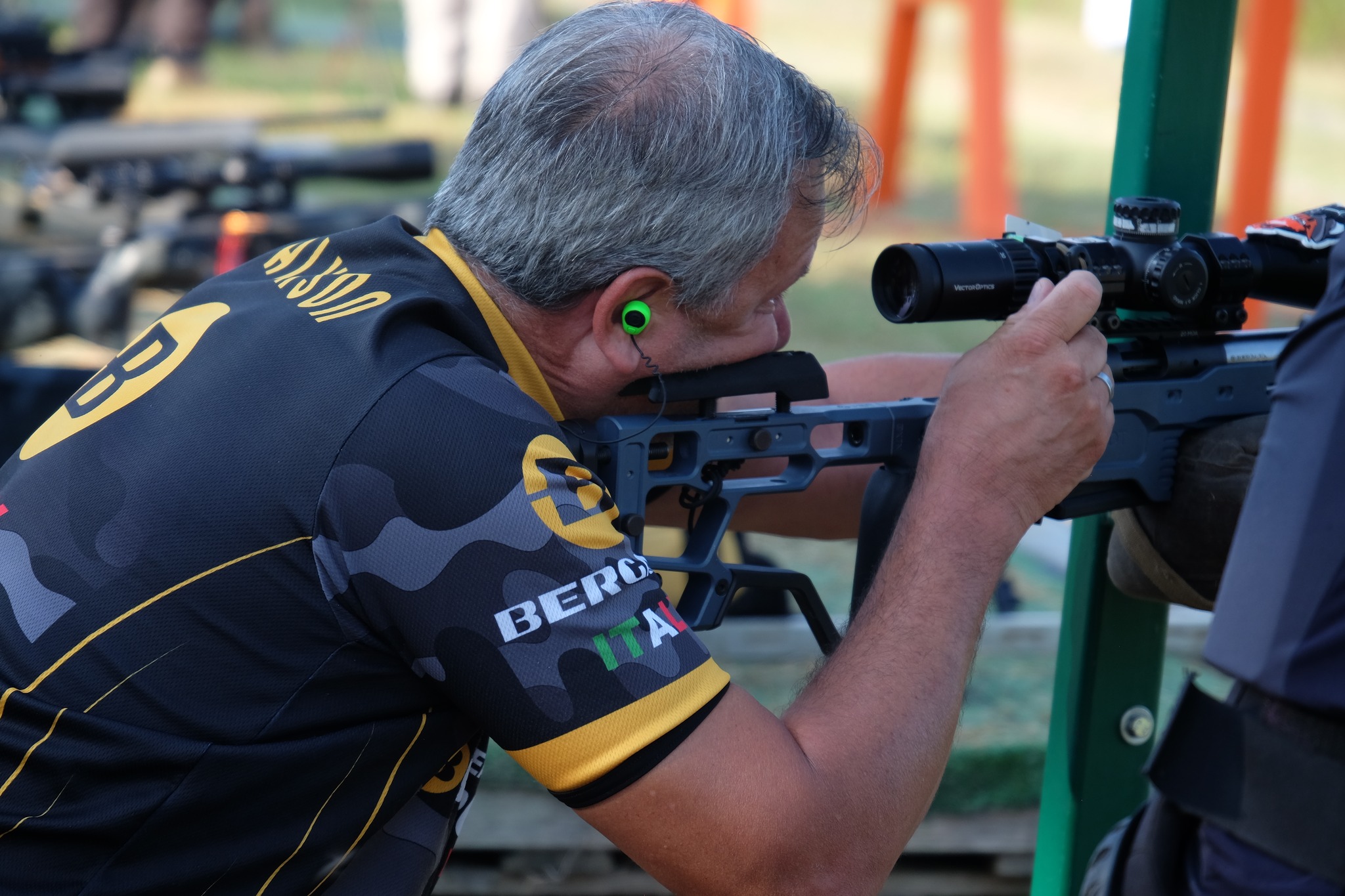
In PRS competition, the distance varies from 10 to 1200 meters or yards, depending on match types shooters take part in. For full-bore matches, the target is 300 to 1000 meters away. While for rimfire matches, the target is around 20 to 300 meters away.
With so many options on the market, like LPVOs, moderate magnification like 3-15x, 4-16x, 3-24x, and high magnifications like 5-30x, 4-32x, 6-48x, what power to choose?
First, LPVOs can be ruled out for PRS due to their limitations at longer distances, such as 1000 yards.
Then, moderate or high? Hard to say the difference between 3-24x and 5-30x. Well, try to hear some experts’ opinions first.
Take Austin Buschman, for example—a name every PRS enthusiast knows. He made history as the first shooter to achieve a perfect score in a two-day PRS match, hitting all 176 targets without a single miss—an extraordinary accomplishment! He revealed his preferred scope settings during competitions in an interview that he often sets at16x magnificationin most matches, while if the target is washed out, he mayincrease to 20x. But for most occasions, he would use 12 to 18x for the entire match.
Most PRS shooters hold that when they set the scope more than 20x, it may amplify the scopeshaking. Under this circumstance, the scope is easy to vibrate and hard to find the full field of view. Unlike fixed benchrest shooting, a shooter has to find the FOV during moving process. Even tiny vibrations may hinder your aiming process at long distances.That’s why you’d better set under 20x magnification and select a scope with a moderate level of magnification for PRS.
Many experienced competitors use 15-17x magnification in PRS competitionbecause it can effectively avoid shakes. For pro-level shooters, over 99% scopes they use cover 10-25x magnification range.
Vector Optics has many options for you. You can choose from the Continental x6 5-30x56 VCT FFP Riflescope. There is also the Continental 4-24x56 FFP Rifle Scope. Another option is the Taurus 6-24x50 Scope. Lastly, you can consider the Taurus GenII 4-32x56 ED. These scopes cover the commonly used 10-25x magnification range favored by competitors, offering versatility and precision.
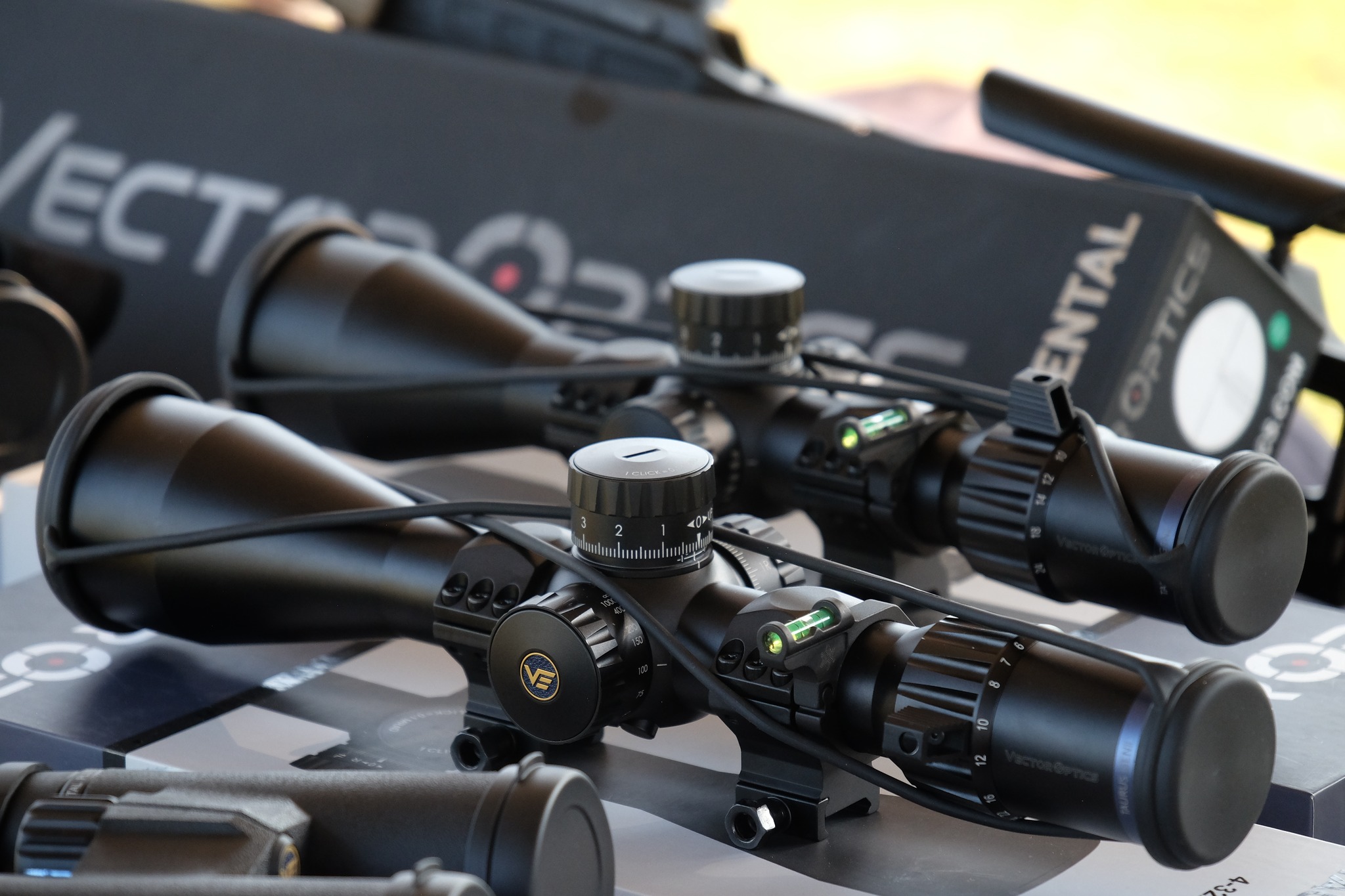
With so many choices available, such as MOA and MIL, Christmas tree and simple ones, what’s the best choice for PRS?
Almost all PRS shooters are using MIL-based scopes. So, make sure you are speaking the same language with other competitors. The reason why most of them use MIL is simple- faster and easier calculations than MOA. Besides, the MIL reticles have finer grid patterns for precise holds and are designed for dynamic shooting scenarios like PRS.
There are mainly two kinds of reticle patterns PRS shooters use, one is complex reticles with many hashmarks and holdovers and the other type is simple type featuring a duplex lines.
We have studied all the reticle types of PRS winnners (Top 100) and found that approximatey 70-80 % shooters use MIL Christmas tree reticles and 20-30% of them use simple reticles without holdover trees.
Since the marvelous record of Austin, his preference in reticle patterns also become the “unofficial gold standard” of many shooters, which is JTAC. He said that shooters often remain close to the center of the reticle during engagements andthe absence of holdover marks significantly simplifies the reticle, providing a clearer view that enhances the ability to spot trace and observe targets through the reticle.
But is the "unofficial gold standard" suitable for everyone? Let’s learn about the pros and cons of simple and Christmas tree reticles first.
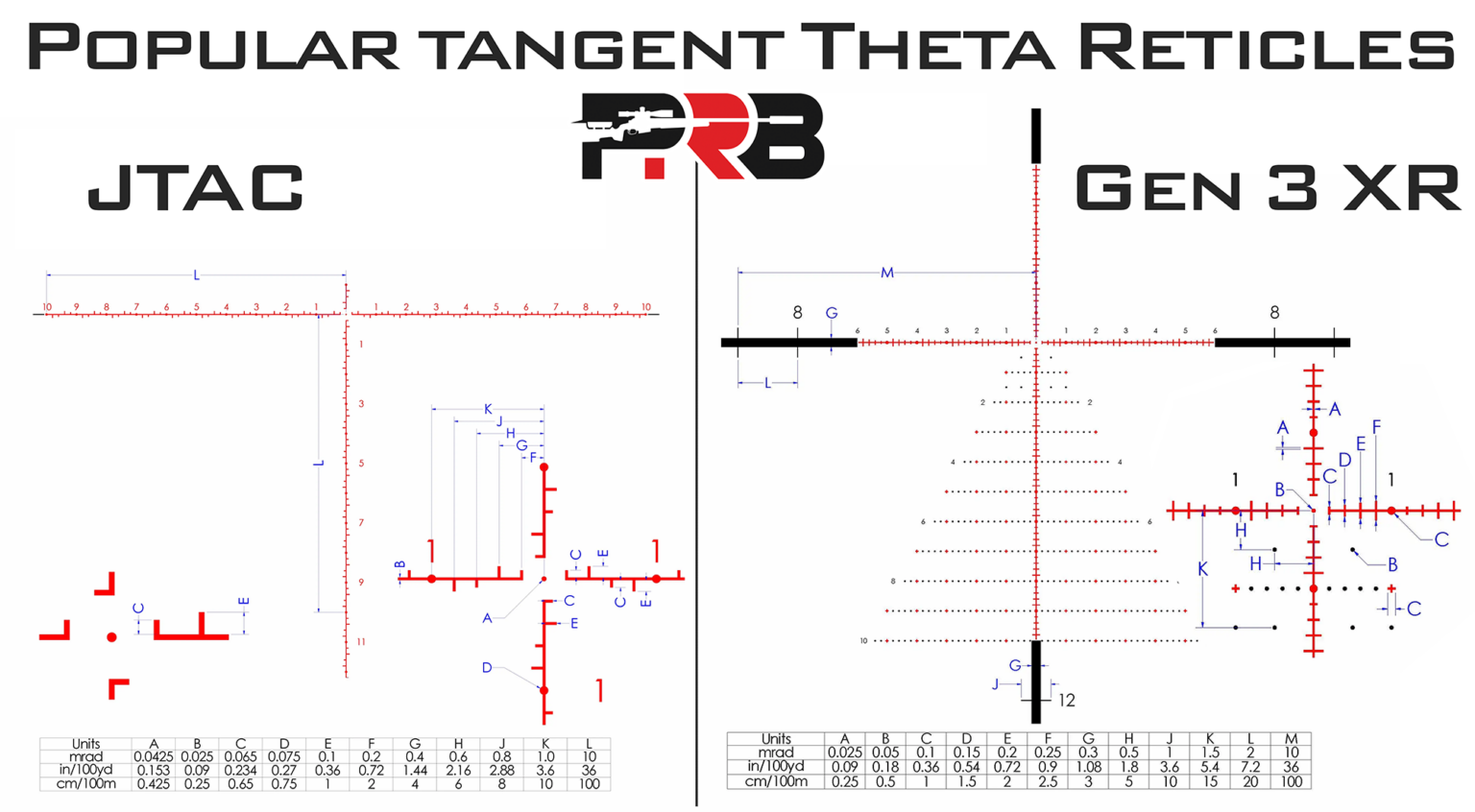
(Image courtesy of Precisionrifleshootingblog.com JTAC VS Gen 3 XR Reticle)
Pros: Clean horizontal space to easily trace objects. Greater visibility, less clutter.The less cluttered viewallows a clear sight picture, making it easier to focus on targets without distractions.
Cons: It lacks detailed markings, making quick wind and elevation adjustments challenging during dynamic stages. Therefore, shooters have to rely on turret dialing for adjustments, which can be time-consuming.
Pros:It enables precise wind holds and rapid follow-up shots. For complicated stages, when you have little time holding wind and elevation, the holdover plays a huge role. By spotting the point of impact directly on the reticle, shooters can make immediate adjustments without needing to dial turrets, saving time and reducing errors. If turret adjustments are necessary, the detailed markings provide exact measurements for corrections, eliminating extra guesswork. It is ideal for dynamic, time-sensitive competitions like PRS.
Cons: The Christmas tree reticle sometimes can appear cluttered, potentially obstructing the view and making it harder to track or trace targets in some situations.
For pro-level PRS shooters, who have developed a strong ability to judge wind and elevation adjustments intuitively, simple reticles can be an excellent choice. Their clean, uncluttered design offers a clear sight picture and makes it easier to trace targets without distractions. However, for those who need precise wind holdovers, a Christmas tree reticle is the better option but make sure it’s not too busy. Its detailed markings allow for quick, accurate adjustments and rapid follow-up shots, making it indispensable in time-sensitive PRS competition. Ultimately, the choice depends on the shooter’s experience, preferences, and specific competition demands.
You need a reticle with fine center dot in case it may cover your target at long distances,making it harder to aim precisely.
Opting for a fine dot ensures better target visibility and shot placement, especially when engaging steel plates or small targets over 800 meters. This precision can make all the difference in competitive shooting.
See how many areas your center mil dot will cover when aiming at 100, 800 and 1000 meters.
Distance | 0.1 MIL Coverage | 0.2 MIL Coverage | 1 MIL Coverage |
100 meters | 1 cm (0.39 in) | 2 cm (0.79 in) | 10 cm (3.94 in) |
800 meters | 8 cm (3.15 in) | 16 cm (6.30 in) | 80 cm (31.50 in) |
1000 meters | 10 cm (3.94 in) | 20 cm (7.87 in) | 100 cm (39.37 in) |
When shooting at targets a thousand yards away, relying on bare eyes simply won’t cut it for assessing the surroundings.
In PRS, spotting scopes and binoculars are both important tools that help shooters gain a better understanding of their surroundings and improve their accuracy.
Binoculars are gaining popularity because they engage both eyes, providing better situational awareness compared to a single-eye view. They are ideal for observing targets up to 1000 yards away.
For general observation and tracking, 10-15x binoculars are a solid choice. Another perk of binoculars is their compact size, making them easy to carry and store.
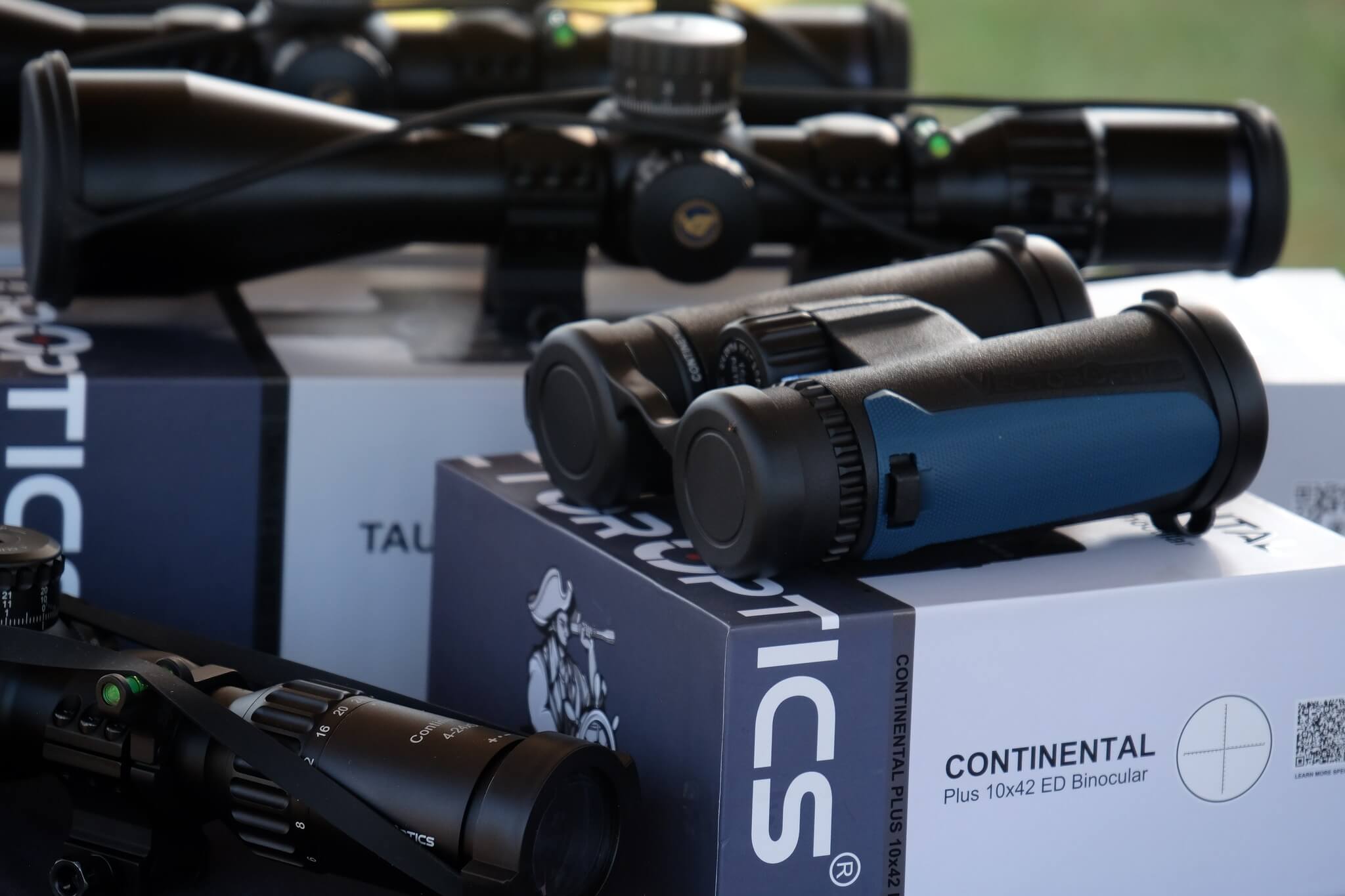
On the other hand, spotting scopes excel in long-range shooting with their high magnification, allowing you to see small targets clearly and analyze shot placement from a distance. They are especially useful for checking bullet impacts or inspecting fine details in challenging light or weather conditions.
Opt for a spotting scope with a mil reticle for precise holdover estimation. However, prolonged use, such as observing for 3-4 stages, can lead to eye fatigue.
If eye fatigue isn’t a concern, the Vector Optics Continental Pro 12-40x60 ED (SCSS-02) and Continental Pro 20-60x80 ED (SCSS-03) are excellent choices for delivering crystal-clear details of your target, even at extended ranges. These spotting scopes are designed to provide superior clarity and precision, making them perfect for PRS competitions or any long-range shooting scenario.
Alternatively, if you prefer a lighter and more versatile option, consider the Continental 15x56 ED binoculars (SCBO-09) or the Continental 10x42 ED OD Green binoculars (SCBO-15).
These binoculars offer outstanding image quality and are ideal for general observation, target tracking, and situational awareness. Their compact design ensures portability, making them easy to carry through multiple stages of a match.
Vector Optics Spotting Scopes for PRS
Vector Optics Binoculars for PRS
● Audible and Tactile
● Zero Stop (preventing over-dialing, and reliable return to zero point)
● Turret Lock
● Revolution Indicator
For PRS competition, shooters favor those scopes with audible turret adjustments. The reason is simple, you can perceive the adjustment range to avoid over or under dialing. Meanwhile, tactile turrets are also necessary. As mentioned above, the shooting process needs to be done within 2 minutes or so, in which all your eyes have to focus on your target. So, the tactile feedback makes up the adjustment precision even without taking eyes off your target.
Another essential function is zero stop. PRS require engaging targets at varying distances within a limited time. With zero stop function, competitors can return to the pre-set zero position after dialing elevation at various target distances.
Also, the zero-stop mechanism ensures the turret cannot be turned below the zero point. This prevents accidental adjustments that could negatively affect accuracy.
The third feature is the turret lock, which is particularly useful for preventing accidental adjustments. Some competitors do admit that they've unknowingly shifted their windage settings during a match. Locking turrets provide a reliable solution, allowing you to secure your windage and elevation in place, especially when navigating certain barricades or challenging shooting positions.
The final feature is the revolution indicator. Knowing how many revolutions you have dialed into your turret is essential due to the wide elevation travel required in a long-range shooting like PRS. It offers both visual and tactile cues, ensuring precise dialing. Vector Optics Continental scopes for PRS include this function, allowing you to effortlessly determine your position by observing the turret indicator's rising state.
If you're seeking a scope with all these features, the Continental series is the perfect choice. Its innovative design includes a zero stop, audible and tactile adjustments, turret lock, and a revolution indicator—everything a PRS competitor requires.
Scope built with large tubes have an edge in PRS. Because larger tubes provide more internal space for the erector system, allowing a greater range of elevation and windage adjustments. This is crucial in PRS, where shooters often engage targets at long ranges requiring significant elevation compensation.
The precise adjustment mechanism is vital for achieving consistent accuracy and performance.
Competitors face targets at varying distances, often under tight time constraints and challenging environmental conditions. A high-quality adjustment mechanism allows shooters to make exact elevation and windage corrections, ensuring that each click translates directly to the intended point of impact.
This precision is crucial for engaging small or distant targets, where even a minor error can mean a missed shot.
Furthermore, a reliable mechanism enhances repeatability, allowing shooters to confidently dial adjustments and return to zero without deviation. In a sport where precision separates top competitors from the rest, an accurate and dependable adjustment system is indispensable.
Vector Optics PRS scopes are built to withstand extreme conditions, offering superior shockproof performance. Tested to endure up to 10,000 recoil cycles, they maintain stability and precision even with powerful calibers like the .338 Lapua Magnum and .50 BMG, making them a reliable choice for professionals and enthusiasts.
A forgiving eyebox is important for PRS shooting. It helps you get a clear sight picture quickly. You can do this without wasting time adjusting your head position.
A wider field of view (FOV) helps you find and follow targets more easily, even at higher magnifications.
The Continental series has an increased ocular lens design. This gives you a larger eyebox and a wider exit pupil. The comfortable forgiving eyebox and a competitive FOV ensure a smoother shooting experience.
In PRS competitions, sudden weather changes can cause problems. Moving from indoor waiting areas to outdoor stages can lead to fogging. This fogging happens because of condensation from temperature differences.
To solve this, pick a scope that is IP67-rated, fogproof, and waterproof. This keeps your optics clear and working in rain, snow, or when changing between different temperatures.
The chart below highlights Vector Optics' top-tier scopes designed for PRS competition. Each model features a robust 34mm tube, first focal plane (FFP), advanced turret systems, and premium optics to meet the high standards of competitive shooters.
The thoughtfully designed FFP Christmas tree reticle, complete with precise 0.2 MIL hashmarks, offers effective holdovers for wind and elevation adjustments. Its clean layout strikes the perfect balance—not too cluttered—ensuring clear visibility and ease of use during intense PRS matches.
Tube Dia | 34mm | 34mm | 34mm | 34mm | 34mm |
Magnification | 4-16x | 6-24x | 5-30x | 4-24x | 4-32x |
Objective Lens | 44mm | 50mm | 56mm | 56mm | 56mm |
Linear Field of View @ 100 yd | 31.4-7.85 ft @ 100 yards | 20.9-5.2 ft @ 100 yards | 24.5-4.1 ft @ 100 yards | 30.6-5.1 ft @ 100 yards | 30.8-3.85 feet @ 100 yards |
Linear Field of View @ 100 m | 10.5-2.6 m @ 100 meters | 6.98-1.75 m @ 100 meters | 8.1-1.36 m @ 100 meters | 10.2-1.7 m @ 100 meters | 10.3-1.28 m @ 100 meters |
Angular Field of View ° | 6-1.5° | 4-1° | 4.7-0.8° | 5.9-1.0° | 5.88-0.73° |
Click Value | 1/10 MIL | 1/10 MIL | 1/10 MIL | 1/10 MIL | 1/10 MIL |
Side Focus | 15 yards to Infinity | 10 yards to Infinity | 10 yards to Infinity | 10 yards to Infinity | 25 yards to Infinity |
Elevation Adjustment Range | 33 MIL | 23 MIL | 26 MIL | 34 MIL | 28 MIL |
Windage Adjustment Range | 15 MIL | 15 MIL | 16 MIL | 16 MIL | 16 MIL |
Turret Function | Zero Stop | Zero Stop | Zero Stop, Turret Lock | Zero Stop, Turret Lock | Zero Stop, Turret Lock |
Illumination Setting | 6 Gears | 6 Gears | 6 Gears | 6 Gears | N/A |
Reticle | 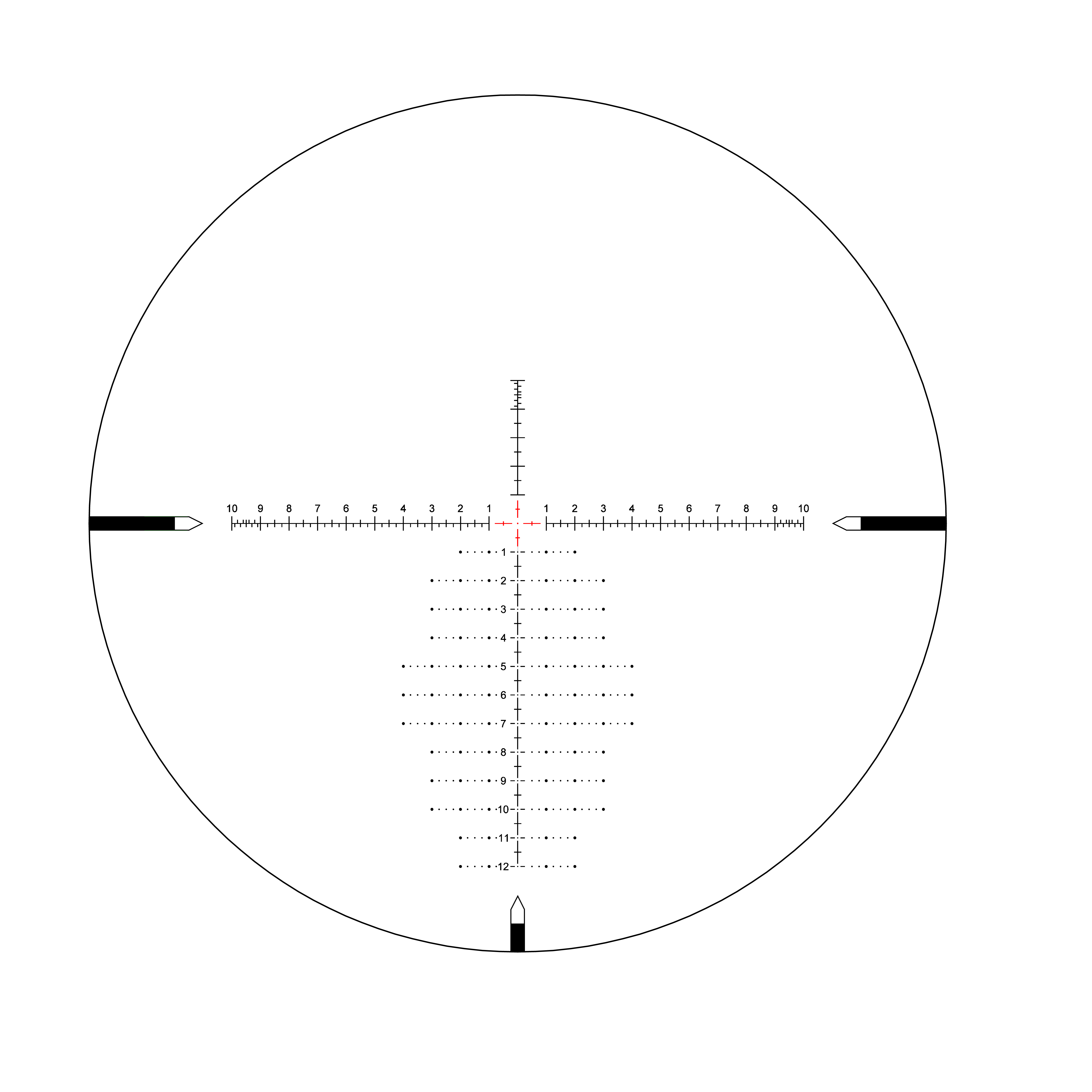 | 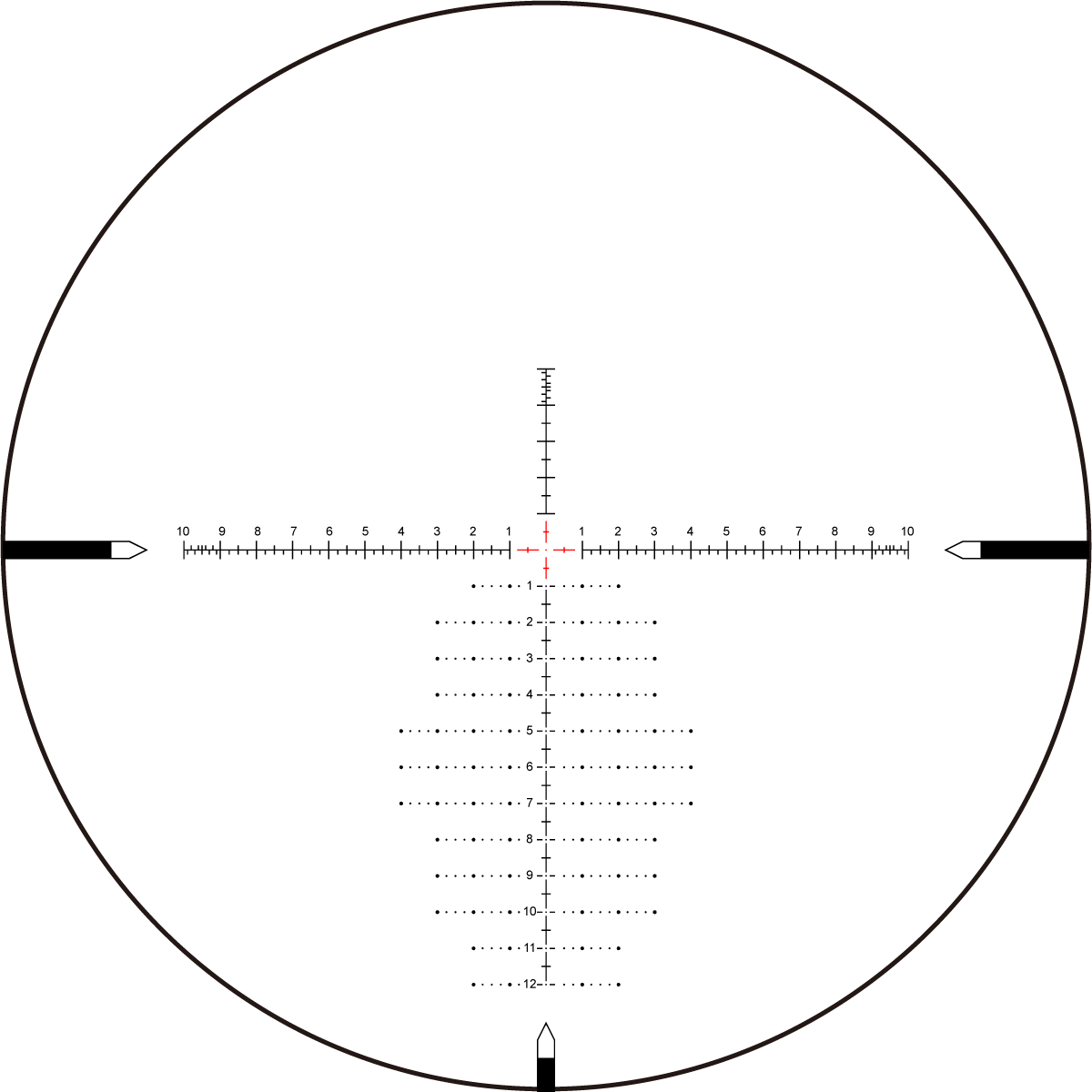 | 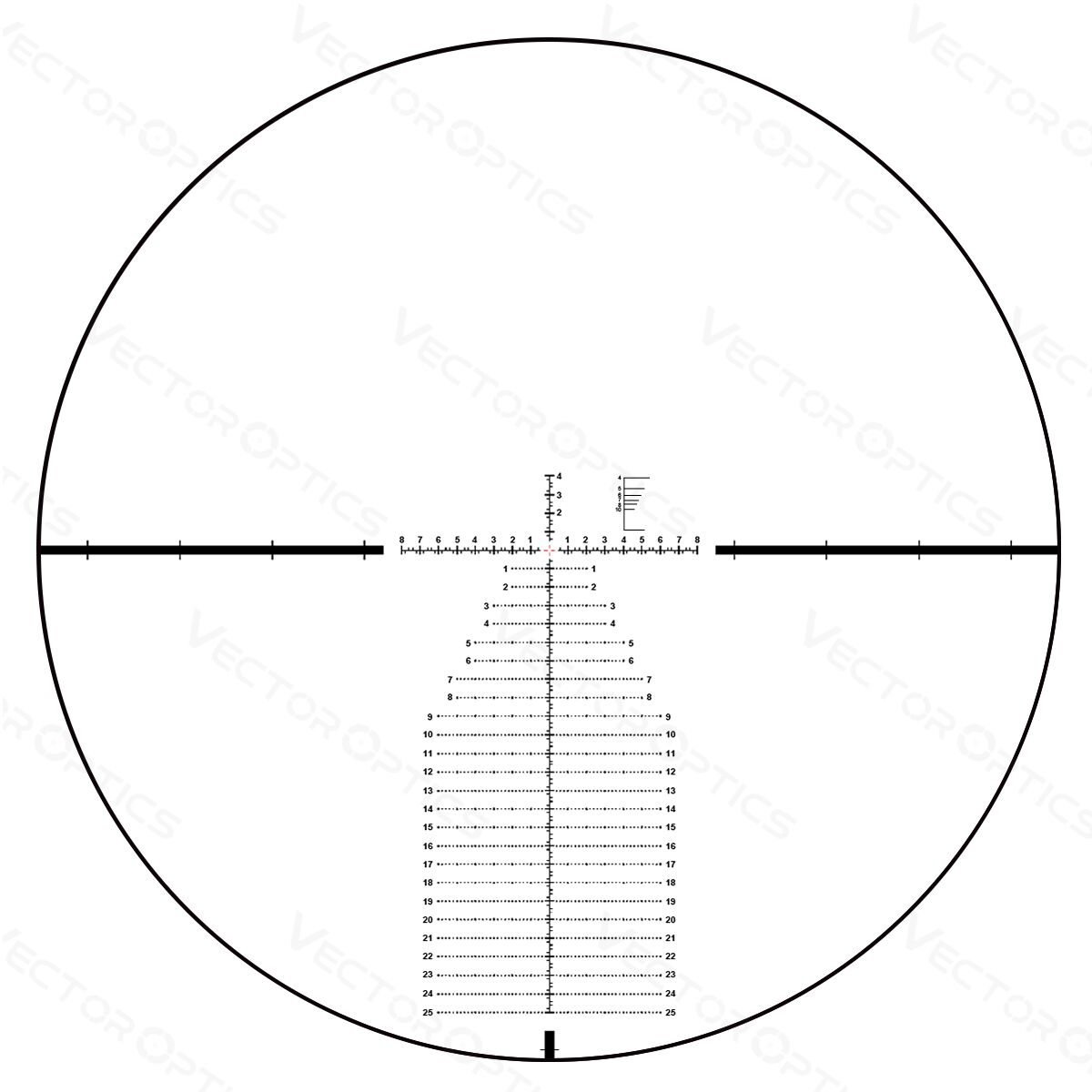 | 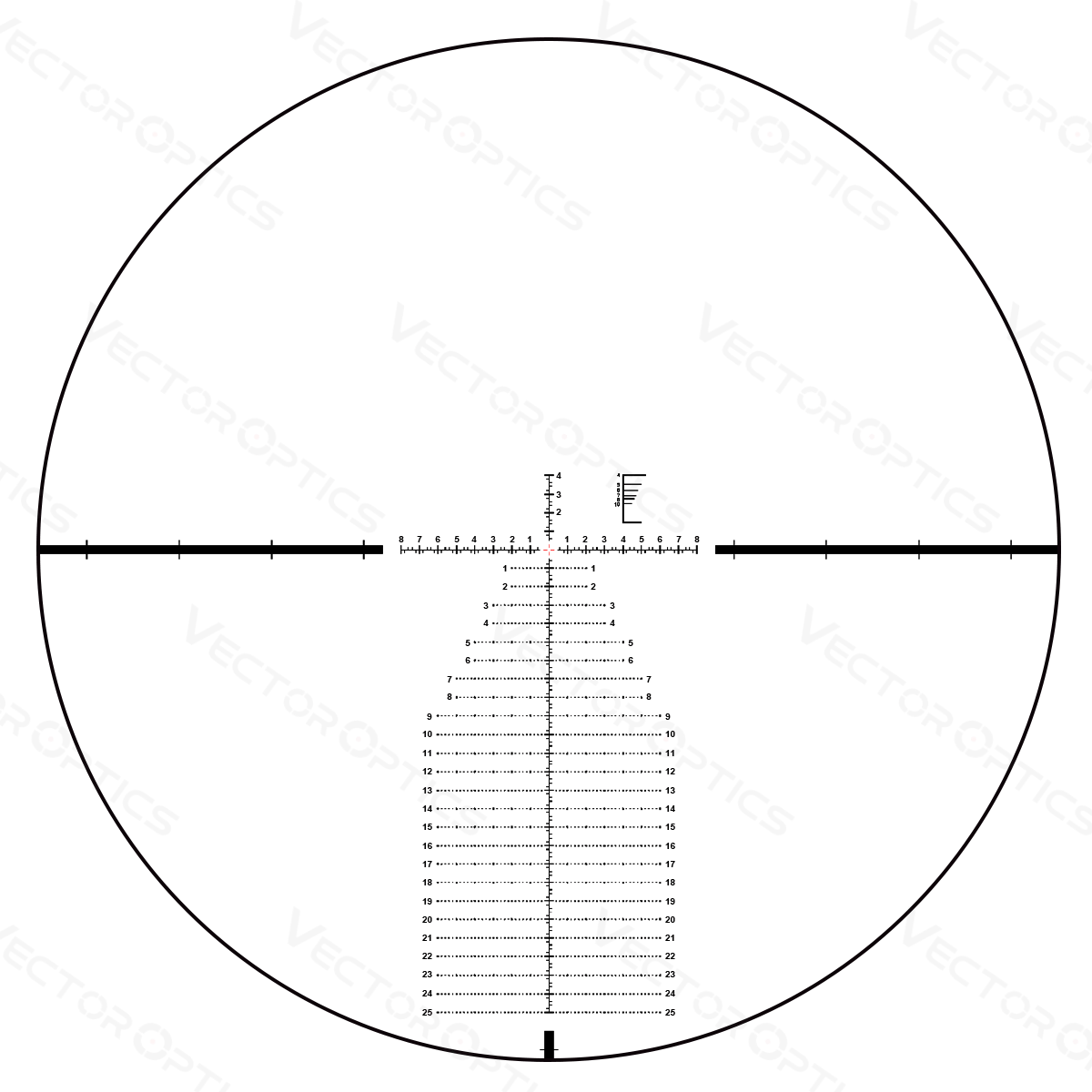 | 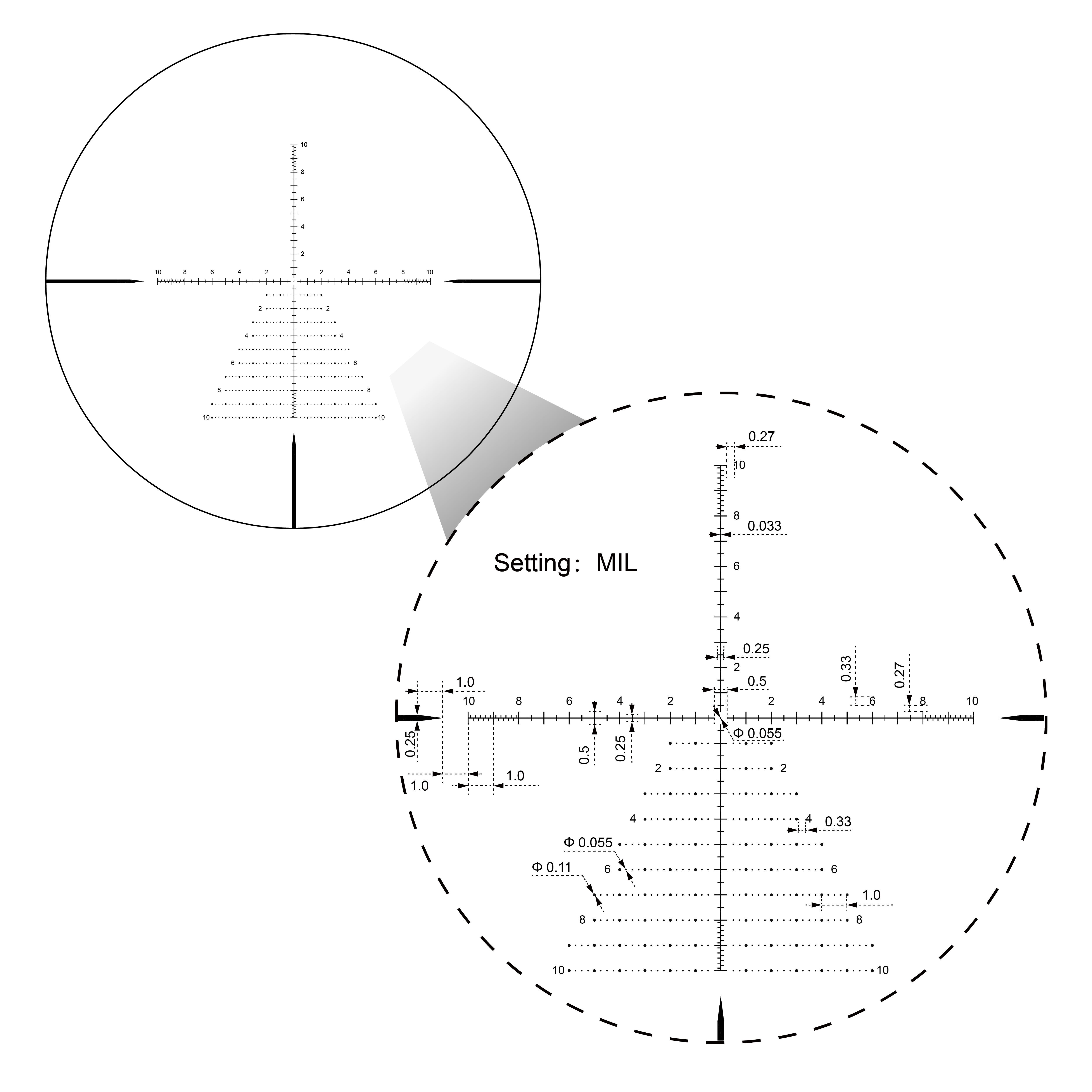 |
References
1. Precision Rifle Shooting. An introduction to this fast-growing sport.
2. https://precisionrifleblog.com/2024/06/10/best-long-range-scope-reticle-what-the-pros-use/
Send Your Inquiry Today
